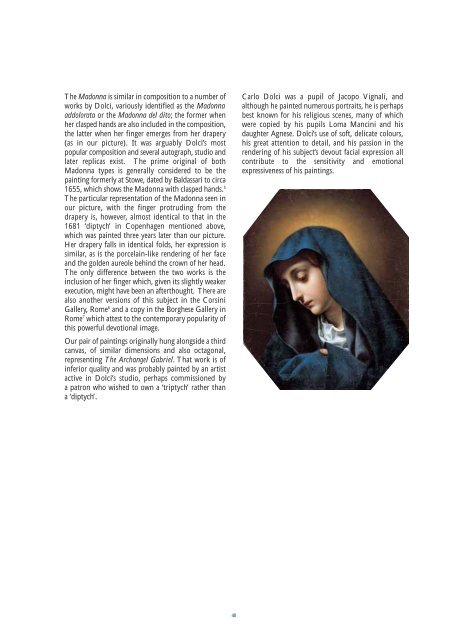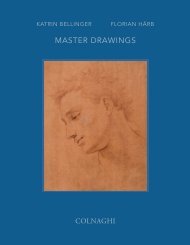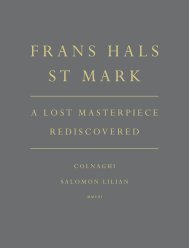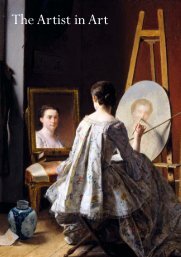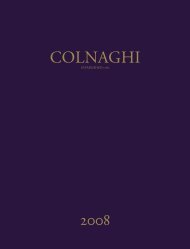2007 Catalogue - Colnaghi
2007 Catalogue - Colnaghi
2007 Catalogue - Colnaghi
Create successful ePaper yourself
Turn your PDF publications into a flip-book with our unique Google optimized e-Paper software.
The Madonna is similar in composition to a number of<br />
works by Dolci, variously identified as the Madonna<br />
addolorata or the Madonna del dito; the former when<br />
her clasped hands are also included in the composition,<br />
the latter when her finger emerges from her drapery<br />
(as in our picture). It was arguably Dolci’s most<br />
popular composition and several autograph, studio and<br />
later replicas exist. The prime original of both<br />
Madonna types is generally considered to be the<br />
painting formerly at Stowe, dated by Baldassari to circa<br />
1655, which shows the Madonna with clasped hands. 5<br />
The particular representation of the Madonna seen in<br />
our picture, with the finger protruding from the<br />
drapery is, however, almost identical to that in the<br />
1681 ‘diptych’ in Copenhagen mentioned above,<br />
which was painted three years later than our picture.<br />
Her drapery falls in identical folds, her expression is<br />
similar, as is the porcelain-like rendering of her face<br />
and the golden aureole behind the crown of her head.<br />
The only difference between the two works is the<br />
inclusion of her finger which, given its slightly weaker<br />
execution, might have been an afterthought. There are<br />
also another versions of this subject in the Corsini<br />
Gallery, Rome6 and a copy in the Borghese Gallery in<br />
Rome7 which attest to the contemporary popularity of<br />
this powerful devotional image.<br />
Our pair of paintings originally hung alongside a third<br />
canvas, of similar dimensions and also octagonal,<br />
representing The Archangel Gabriel. That work is of<br />
inferior quality and was probably painted by an artist<br />
active in Dolci’s studio, perhaps commissioned by<br />
a patron who wished to own a ‘triptych’ rather than<br />
a ‘diptych’.<br />
48<br />
Carlo Dolci was a pupil of Jacopo Vignali, and<br />
although he painted numerous portraits, he is perhaps<br />
best known for his religious scenes, many of which<br />
were copied by his pupils Loma Mancini and his<br />
daughter Agnese. Dolci’s use of soft, delicate colours,<br />
his great attention to detail, and his passion in the<br />
rendering of his subject’s devout facial expression all<br />
contribute to the sensitivity and emotional<br />
expressiveness of his paintings.


